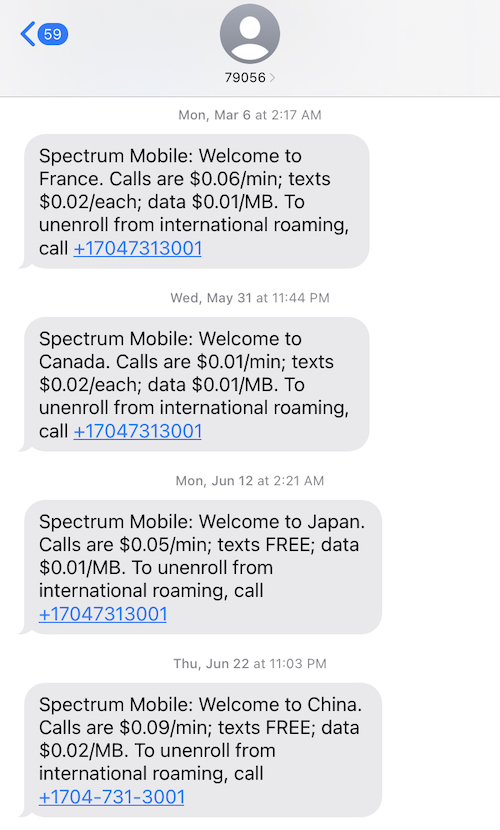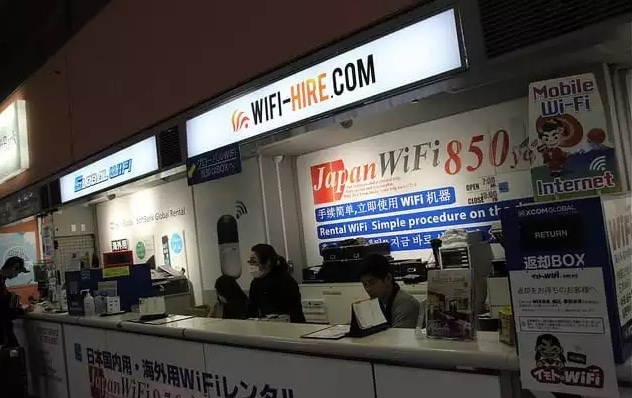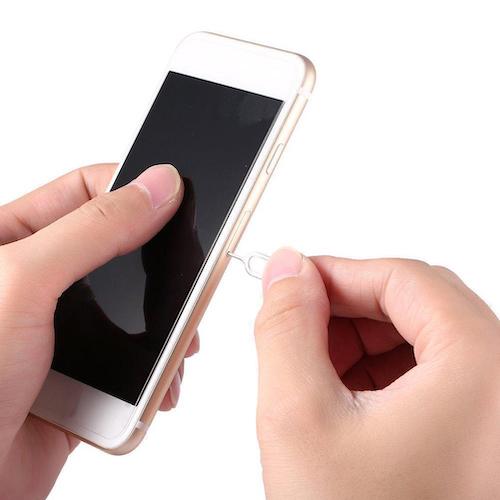How to Get Phone Services and Internet When Traveling Overseas
Posted by Grace on August 13, 2023
Having uninterrupted connectivity is a must while traveling overseas, especially when you're navigating, finding places to eat using Google Maps, trying to translate foreign language signs, and communicating with your Airbnb hosts. Here are a few options for you to consider so you can stay connected.
1. Provided by Your Mobile Phone Carrier
I used to have T-Mobile, which provided a free data plan for all international travels in 2G, and I purchased a data package for 3G. The price was quite reasonable.
Here's the list of US carriers providing free or included international data plans while traveling overseas:
-
T-Mobile: T-Mobile offers free international roaming in over 210 countries and destinations. Customers on eligible plans can enjoy unlimited text and data (albeit at reduced speeds) while traveling abroad.
-
Sprint (now part of T-Mobile): Sprint used to offer its "Global Roaming" plan, which allowed customers to get free text and 2G data in select countries. However, as of the merger with T-Mobile, Sprint customers are encouraged to transition to T-Mobile plans for better international coverage.
-
Verizon: Verizon offers its "TravelPass" feature, which allows customers to use their existing plan's talk, text, and data allowances in over 185 countries for a daily fee. It's not free, but it provides a cost-effective way to use your domestic plan while traveling.
-
AT&T: AT&T offers the "AT&T International Day Pass," which allows customers to use their existing plan's talk, text, and data allowances in over 200 countries for a daily fee. Similar to Verizon's TravelPass, it's not free but provides convenient access to your domestic plan while abroad.
-
Google Fi: While not a traditional carrier, Google Fi provides international coverage as part of its plan. Subscribers can use their plan's data and texting features in over 200 countries without extra charges.
-
US Mobile: US Mobile offers a variety of plans, some of which include international roaming. Customers can select specific international roaming options based on their travel needs.
Tip
Turn off data: If you don't have an unlimited data plan while roaming in a different country, you may want to limit the data you are using. You can turn off the data option when you don't need internet access. You can also selectively choose which apps can access the internet by setting up on your phone.
We were using a US carrier called Spectrum. The data plan was extremely expensive. Their plan is super cheap domestically. As soon as you reach other countries, the price becomes prohibitive.
 Rates provided by the carrier Spectrum were sent to me via text message as soon as I landed in a new country.
Rates provided by the carrier Spectrum were sent to me via text message as soon as I landed in a new country.
2. WiFi Box at Destination Airports
If you don't have a carrier offering affordable international data plans, you can rent WiFi boxes at the airport. They are also called Pocket WiFi.
A WiFi box, also known as a portable WiFi hotspot, is a compact device that allows you to create a local wireless network (WiFi network) and share an internet connection with multiple devices, such as smartphones, tablets, laptops, and other WiFi-enabled devices. It functions as a mobile router that provides internet access to these devices using cellular data networks, similar to how a regular router provides WiFi in a fixed location.
 Pocket WiFi booth at a Japanese airport
Pocket WiFi booth at a Japanese airport
If you travel in a group, you can share one WiFi box with your group.
In Japan, we rented a WiFi box at the airport. I would say it met our basic needs, but the speed was miserable.
3. Buying a New SIM Card at the Destination
If the performance of WiFi boxes disappoints you, you have another choice!
You can purchase a new SIM card and a new phone number when you arrive at the new country. The SIM card usually bundles with a cheaper data plan.
This is helpful when you stay for a longer period of time (over 1 month).
When we stayed in China , we bought new SIM cards at the airport. They asked us for passports and gave us the new SIM card to put into the phones. China has stricter regulations for purchasing SIM cards, so we were glad we could get new phone numbers when living in China.
Tips
Unlock you phone: You cannot use the new SIM card if your phone is still locked with your US carrier. Make sure your phone is unlocked before you leave US.
Use VPN: Depending on your level of confidence in the new carrier, you might want to consider using a VPN to proxy your requests. This can provide a sense of security when handling sensitive tasks like banking while traveling. NordVPN is always our go-to VPN, easy to use and reliable. Get NordVPN here!
Bring a SIM card removal pin: If you need to switch SIM cards from time to time during the travel, bring a SIM card removal pin. Toothpicks may work too.
 Use a SIM card removal pin to open the SIM card tray when changing SIM cards
Use a SIM card removal pin to open the SIM card tray when changing SIM cards
Conclusion
Keep in mind that carrier plans and offerings might change over time, so it's a good idea to verify the details with the carrier's official website or customer support before making travel plans.




